I want to display bars on a time series chart with proper bar widths.
fig,ax1=plt.subplots()
x_nums = list(range(50))
x_dates = pd.date_range(date_from,periods=50,freq='h')
y1 = list(range(50))
y2=y1.copy()
y2.reverse()
ax1.plot(x_nums, y1, color='r',zorder=10,linewidth=5)
# ax1.plot(x_dates, y1, color='r',zorder=10,linewidth=5)
ax2=ax1.twinx()
ax2.bar(x_nums, y2, color='b',zorder=1,alpha=0.3)
# ax2.bar(x_dates, y2, color='b',zorder=1,alpha=0.3)
when I plot this with x_nums, left image will be shown, if with x_dates, right will be shown.
- How can I make bars of proper width, ie the same as on image 1? I know I can set ax2.bar(width=.1) or something but I want to generate many charts with different number of ticks and sizes and I just want matplotlib to maintain proper widths as it does if x_nums is the X axis.
I tried setting witdth = 1/len(x_dates) but that did not work for charts with lots of ticks as it makes the bars too thin.
[EDIT] answer: upgrade matplotlib to version where width accepts np.timedelta, then
ax2.bar(x_dates, y2, width=(x_dates[1]-x_dates[0])*0.8)
- How can I send ax1 to front? zorder is not working in this case. I still want y1 to be on left side and y2 to be on right side.
[EDIT] answer: PyPlot move alternative y axis to background
Thank you!

